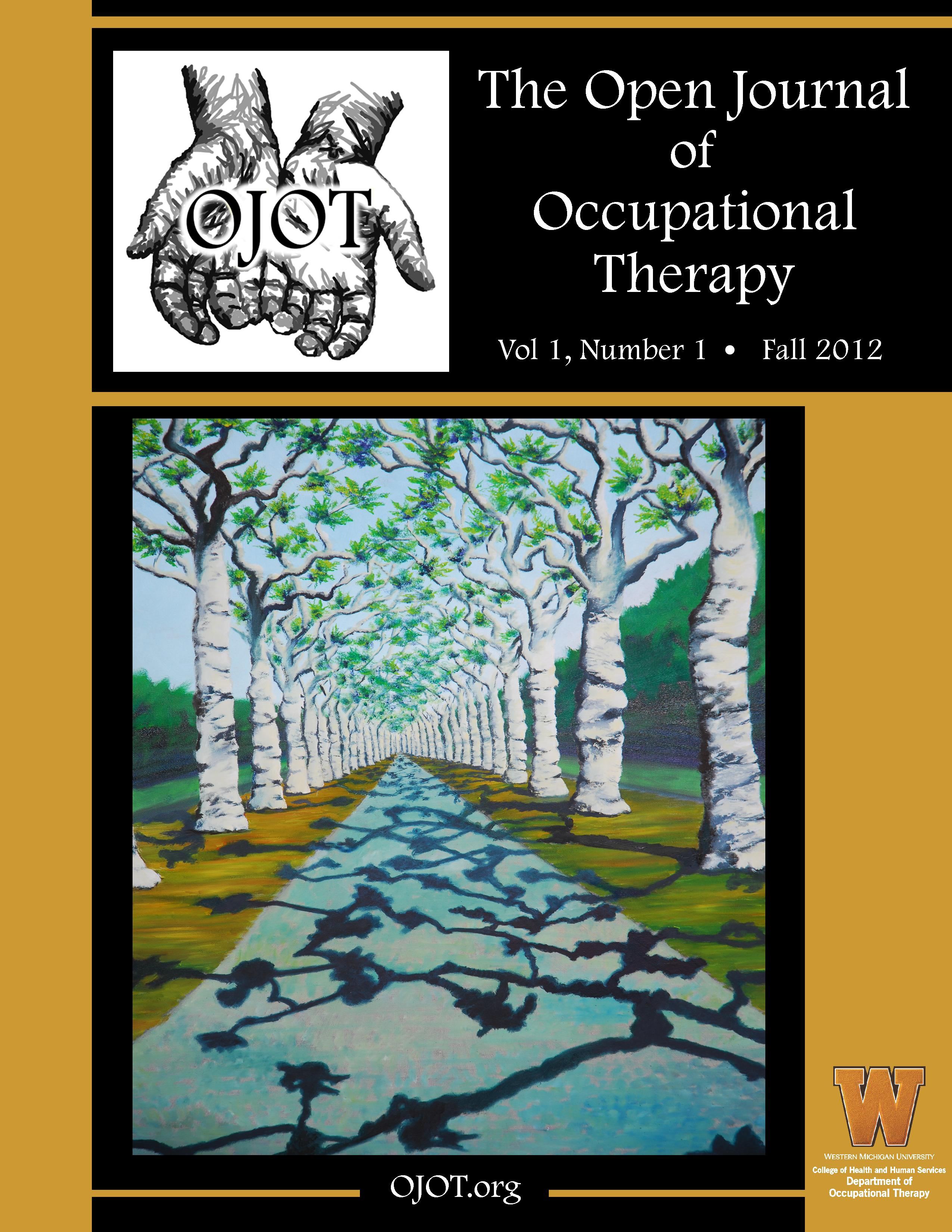ScholarWorks > HHS > OT > OJOT > Vol. 10 > Iss. 3 (2022)
Credentials Display
John V. Rider, PhD, OTR/L, MSCS, CEAS
Monica C. Tay, OTD-S, BA
Abstract
Background: Chronic pain can significantly disrupt occupational engagement through physical, psychological, and social domains. Because pain is a subjective experience influenced by numerous factors, it has the capacity to become increasingly complex. Evidence supports addressing chronic pain through a biopsychosocial approach and promoting health and well-being through occupational engagement.
Method: This case report describes the implementation of psychosocial and occupation-focused assessments and interventions for a 68-year-old client with chronic pain and increased symptoms of depression, anxiety, and pain catastrophizing. The use of an occupation-focused time-use assessment (Occupational Experience Profile), psychosocial assessments, and pain assessments guided intervention development. Occupational therapy intervention consisted of evidence-based approaches to address well-being and the pain experience through motivational interviewing, acceptance and commitment therapy, therapeutic exercises, pain neuroscience education, and graded exposure to occupational engagement.
Results: The client demonstrated significant progress, and although pain was still present at discharge, he had met all client-directed goals. Outcome measures at discharge indicated improvements in depression, anxiety, catastrophizing thoughts about pain, and occupational engagement.
Conclusion: Using a biopsychosocial approach, occupational therapists can incorporate psychosocial and occupation-focused assessments and interventions to increase quality of life and occupational engagement, improve overall well-being, and support clients in living well with chronic pain.
Recommended Citation
Rider, J. V., & Tay, M. C. (2022). Increasing Occupational Engagement by Addressing Psychosocial and Occupational Factors of Chronic Pain: A Case Report. The Open Journal of Occupational Therapy, 10(3), 1-12. https://doi.org/10.15453/2168-6408.2027



Comments
The authors declare that they have no competing financial, professional, or personal interest that might have influenced the performance or presentation of the work described in this manuscript.